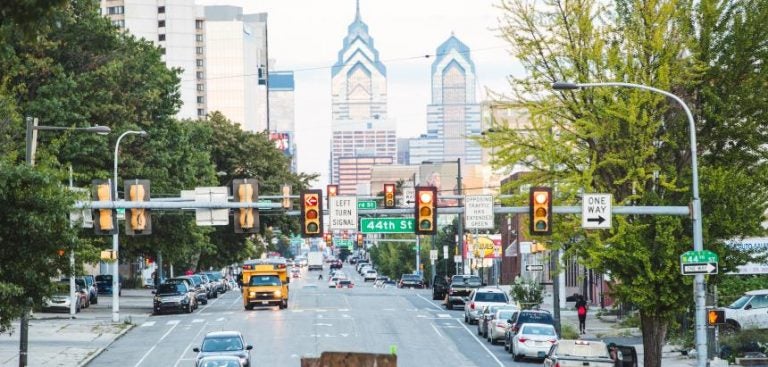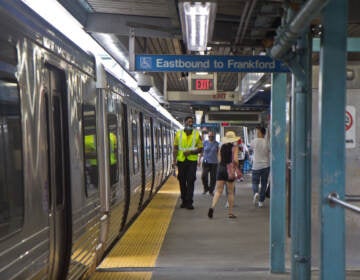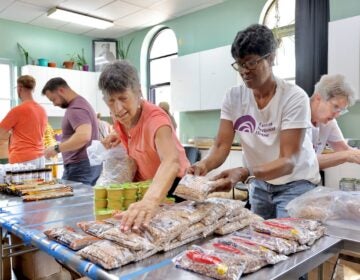University City foot traffic returns to pre-pandemic levels
While Center City is still missing 93,000 office workers, University City streets are seeing the same amount of foot traffic as they did before the pandemic.

A view of the skyline from University City (Lora Reehling/University City District)
People are returning to Philadelphia sidewalks after COVID-19 restrictions emptied city streets –– but not all areas are yet back to pre-pandemic levels.
University City District leaders reported that two prime district intersections –– 40th and Walnut streets and 34th and Chestnut streets –– are seeing as much foot traffic as they did before the pandemic, and more so on weekends.
Patrick Bayer, a senior manager at the UCD, credited vaccine mandates, the return of students to major universities, as well as the presence of major hospitals and other institutions that helped stabilize employment in the area, even during the pandemic.
“Once the universities fully returned, so did nearly 80% of our workforce, leading to busy, bustling streets,” he said. “While we of course saw precipitous drops in pedestrian counts in the early days of the pandemic, the fact that 37.4% of our workforce are within health care and social assistance meant that people were still coming to their jobs in our local hospitals.”
But Center City, the largest cluster of jobs in the region, was still lagging behind on foot traffic. While 2019 estimates tracked about 80,000 jobs based in University City before the pandemic, Center City was home to 243,000. Officials in both districts track foot traffic as a measure of economic vitality. More pedestrian traffic can also increase the value of retail storefronts.
Paul Levy, head of the CCD, pointed to some positive indicators: the return of most tourists and shoppers, increasing use of public transit and downtown garages, plus a growing residential population. Nearly 60,000 people live in Center City — a number continued to rise even during the pandemic, and could grow even more aided by certain trends accelerated by the pandemic.
But overall daily foot count averages were still more than 25% lower than before the pandemic. Levy estimated that tens of thousands of downtown workers have yet to return to offices or other places of employment.
“We are still, quite simply, missing about 93,000 office workers who were there in the summer and fall of 2019,” he said. “The number of visitors, tourists and shoppers, it’s been steadily increasing. But everybody thought the office worker population was really going to come back right after Labor Day. Obviously, the delta variant significantly slowed things down.”
He said the key was employer vaccine mandates that would enable more workers to return. But he also said the more diffuse collection of jobs, housed in numerous downtown offices operated by a variety of different employers, had led to a more uneven recovery downtown than in University City.
“It’s great that we got that compliance out in University City, and we’re seeing it too. I talk each day to another employer that says, ‘you know, we’re going to require vaccinations and they’re coming back,’” he said. “And so I’m optimistic about recovery, but … we can’t flip the switch in Center City, like how three or four major institutions can in University City.”

Subscribe to PlanPhilly
WHYY is your source for fact-based, in-depth journalism and information. As a nonprofit organization, we rely on financial support from readers like you. Please give today.









